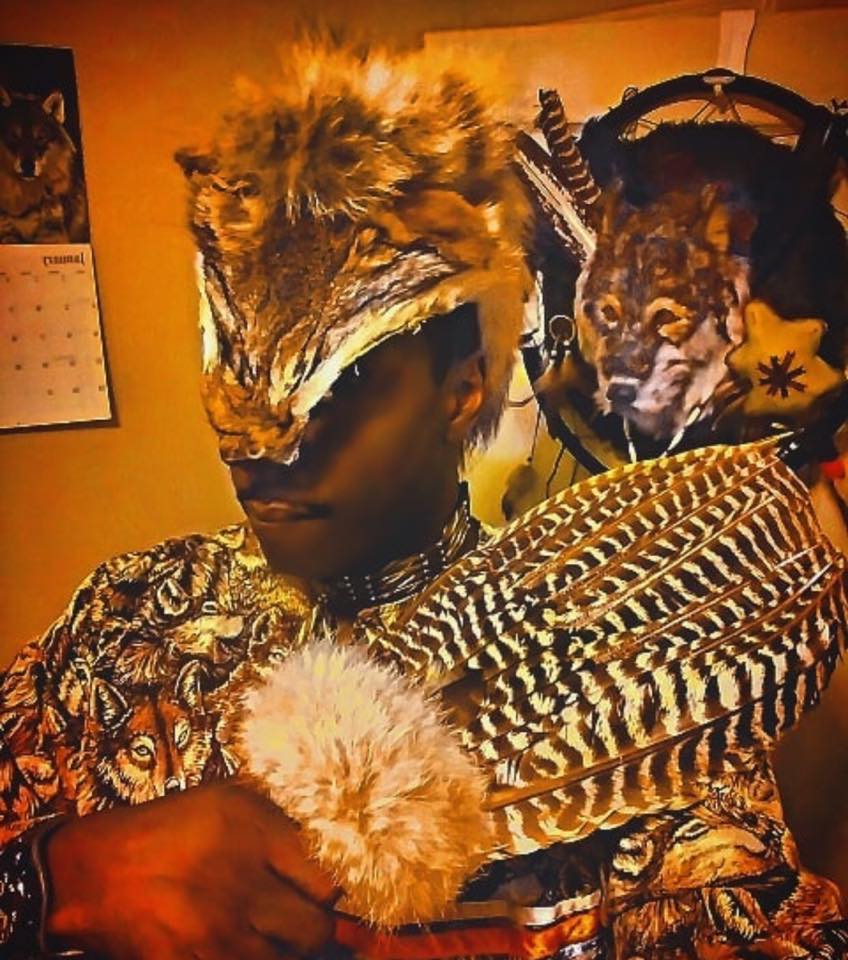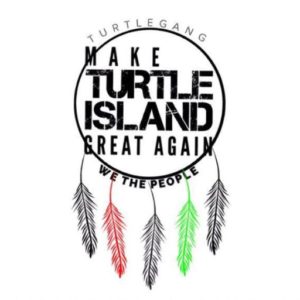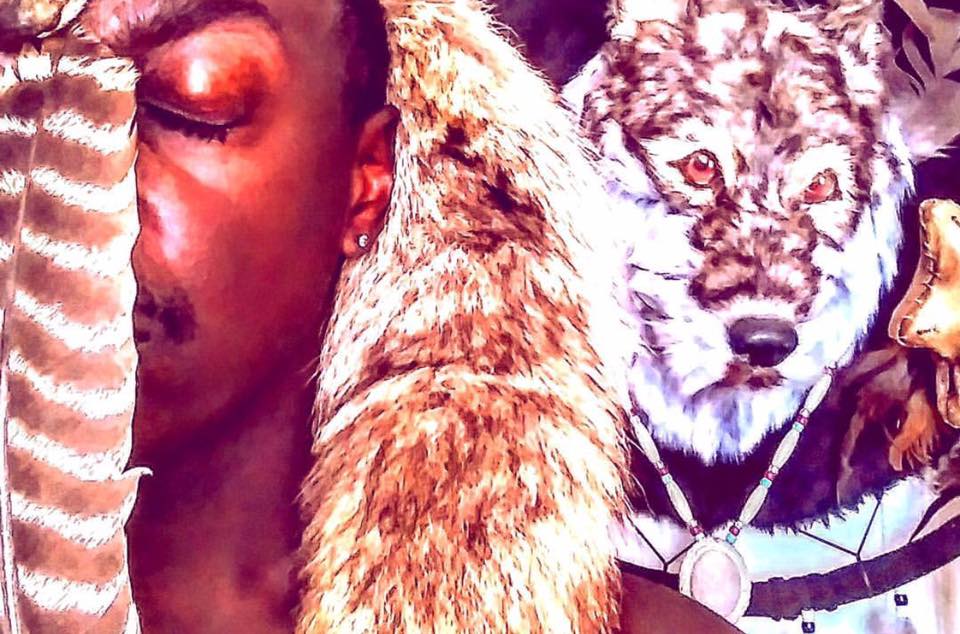Indian Identity In The 21 st Century: These Are Our Stories Pt. 1 – Gray Eagle In The Sky
I am Gray Eagle In The Sky

|
Depending upon where you are in the country and whom you ask you will likely hear a wide range of responses when you ask the question, “What makes you an Indian”? For many who were born and or grew up on Indian Reservations aka “The Rez” they will often tell you they are Indian because that is where they are from and it is where their parents and grandparents were from as well.
You will also hear things such as; they grew up listening to the Elders singing the old songs, making their regalia (for those who danced), learning the various dances, such as Northern Traditional, Snake Dance, Grass Dance, Smoke Dance, Round Dance, Crow Hop, Stomp Dance, Jingle Dress Dance etc. You’ll also hear that their tribe’s traditions were taught in their homes. And of course, you will almost but certainly hear, “I have my CDIB Card (Certified Degree of Indian Blood) so that is what makes me an Indian”.
Others, such as those known commonly as “Urban Indians” or “Non Reservation Indians” will often respond to the question, “What makes you an Indian”? by saying, “I know I’m Indian because I identify so strongly with nature, animals and my love of the earth”. Some will say they know they are Indian because they can strongly identify with Indians and have always felt something stir within them when ever they watched Indian movies even as a child.
Others will say and this is actually the most common thing that you will hear is, “I know I’m Indian because my mother told me her Grandmother was Indian”. Some may even be able to tell you specifically which tribe their family is from. And an equal share or more may not have that information. As we know this is generally a direct result of “The Cultural Assimilation of Native Americans” which took place systematically as early as the 16th Century.
Aside from clear and direct genocide Europeans would regularly engage in the systemic rape,enslavement and in some cases marriage with Native Americans. In the case of the latter it was often done as a power move to gain leverage within the tribes via their Mixed Blood (Euro-Native) offspring. This was an effective strategy that was successfully put into practice among the South East Woodland Indians of the “Five Civilized Tribes” which consisted of the Choctaw, Chickasaw, Cherokee, Muskogee/Creek and the Seminole.
However, the greatest examples of these practices among those five tribes which come to mind are with The Choctaw and The Cherokee – both of which have had strong and persistent Euro-centric influence since the 1700’s in ever increasing proportions. Among the Choctaw the French would strategically do things such as marry the Chief’s sister or cousin to levy their way into the family. As a result of this the offspring would eventually rise to power and lead the tribe away from their original structure and dynamics – thus migrating the people further and further from their traditions and deeper into the white man’s world.
Another very powerful reason a good number of Urban Indians do not have their specific tribal information is due to Indian Identity Suppression. This action which was done via legislation and enforcement by authorities along with their sympathizers (certain members of the public at-large) made it not only illegal but also dangerous to declare oneself as an Indian. This was particularly true for quite some time for Indian people who did not live on reservations. American Indians who identified as such or were perceived as such could be declared as “Hostile Enemy Combatants”. They were jailed, beaten and could be burned to death, shot dead and even hung – all on sight.
For this reason many Indians who left their traditional lands during acts such as the “Dawes Roll Commission” which was held in Indian Territory (land set aside west of the Mississippi River for tribes who previously lived east of the Mississippi River who were forcibly removed during the “Trail of Tears”) which regarded Euro-mixed Indians and those Europeans who slid money under the table to Indian Agents as the actual “Indians” could no longer legally identify themselves as Indians. Even the white men who married Indian women who lived within the newly Federally established Indian Territories were given the status of “Citizens by Marriage” within the tribes by way of the Dawes Roll Commission.
Additionally, the Indian agents who were in charge of registering Indians with the Federal Government routinely classified Full Blood Indians who were of darker complexions as “Freedmen”. In turn this wrongly categorized them as “Former Slaves of the Five Civilized Tribes”. This action grouped them in with the actual African descendants who were slaves of the aforementioned tribes. This in turn classified these dark skinned Indians as “Non Indian – African Descendants”.
A couple of things happened during those days – the full bloods who had been classified as Africans lost their statuses within the tribes so much so that they were often heavily discriminated by the same people with whom they have lived all of their lives. They were marginalized to such a degree that many of them left of their own accord and some were believed to have been eventually put out as well. Now having their Indian identities stolen from them on paper and by it being illegal to declare who they really were they were left with little to no choice but to identify themselves as the other dark skinned people who were also being oppressed – the Negroes who were known later as “Black”.
Any Indian who no longer lived in Federally Recognized territories risked their lives to identify themselves as such. And anyone who took passed this information on to their children took an even greater risk because if the children repeated this they could be harmed and the entire family could be persecuted or killed. Many of these dark skinned Indians went on to establish numerous all “Black Towns” that sprung up through out Oklahoma. Many of the elders of the five tribes who left or were banished – they and their descendants also lived through the tragedy that took place on “Black Wall Street” in Oklahoma as well.
As for myself, I am an Urban Indian. I am only two generations removed from living on my family’s reservation (The Mississippi Band of Choctaw Indians) and my family’s traditional land in North Central Mississippi (The Chickasaw Indians prior to removal). I identify and connect with several of the ways that many other Non Reservation Indians identify with their heritage. Before I knew I was an Indian (I did not meet my dad until I was almost an adult to learn of my Choctaw heritage) I always identified deeply with Indians in what ever format I was able to see them as a child and I always connected strongly with Spirit, animals and nature.
Growing up for a time I lived with my Grandmother who although she mentioned things about her Indian mother to me I was too young at the time to be able to fully grasp what she was telling me – nor did I have the presence of mind to ask her any questions. Unfortunately, it was just a few years before she “Walked On” did I find out that she was Chickasaw, Cherokee and Penobscot and that her mother was a “Full Blooded Indian”. Before we buried her the Spirits spoke her Native name to me. Because of this her body was commenced to the earth with the honor she did not bear in life – an Indian name – “Little Flower”.
Going backwards for a moment in time – before turning an adult – I met my father and later found out that his father was a Full Blooded Choctaw Indian. I eventually met my Grandfather. I also found out that both my Grandfather on my dad’s side and my Grandmother on my mom’s side were born and lived their early lives on their traditional tribal lands in Mississippi. After finding all of this out my journey on the Good Red Road began more than 30 years ago.
To Be Continued…
 |











